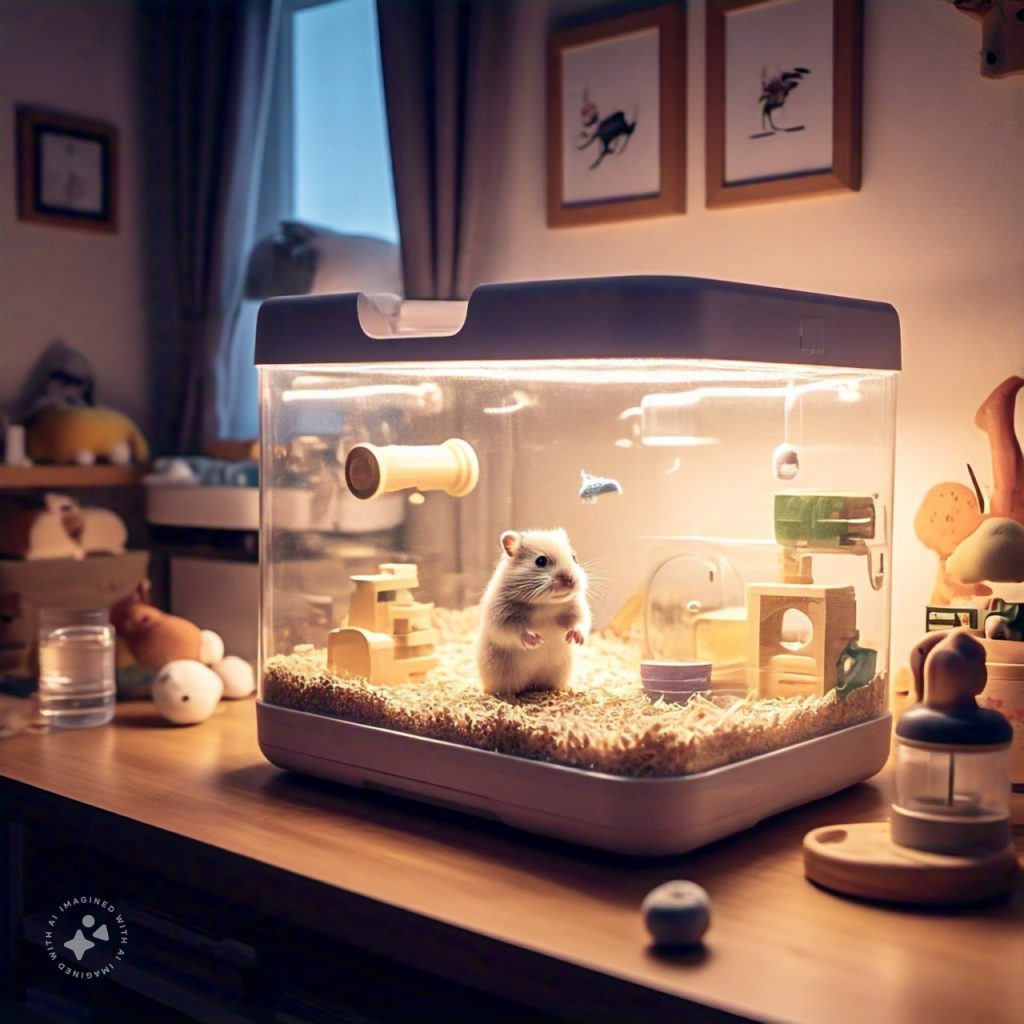When it comes to choosing the best hamster cage, the options can be overwhelming. Hamsters are small, active creatures that require a secure, comfortable, and stimulating environment to thrive. A well-chosen cage isn’t just about size or aesthetics; it directly impacts your hamster’s health, behavior, and happiness. In this guide, we’ll delve into vet-recommended hamster cages, their key features, and what to consider when making your choice.
Why Does the Right Cage Matter?
The cage you select serves as your hamster’s entire world, influencing their physical and mental well-being. Here’s why the right cage is crucial:
- Space to Explore: Hamsters are naturally active and need ample room to move, burrow, and play.
- Ventilation: Proper airflow prevents respiratory issues and keeps the environment fresh.
- Safety: The cage must prevent escape and avoid injury from sharp edges or unsuitable materials.
- Stimulation: A good cage includes space for enrichment, such as tunnels, wheels, and toys.
Key Features of Vet-Recommended Hamster Cages
- Size:
- Minimum Requirement: Vets recommend at least 450 square inches of continuous floor space.
- Why Bigger Is Better: Larger cages reduce stress and allow for natural behaviors like burrowing and running.
- Materials:
- Opt for durable, non-toxic materials like plastic, glass, or coated metal.
- Avoid cages with exposed wood that can absorb urine and become unhygienic.
- Bar Spacing:
- For dwarf hamsters: Bar spacing should not exceed 0.25 inches.
- For Syrian hamsters: Bar spacing should not exceed 0.5 inches.
- Ease of Cleaning:
- A removable base or simple design makes cleaning quick and efficient.
- Ventilation:
- Ensure adequate airflow, particularly for enclosed cages like glass tanks.
- Accessibility:
- Multiple doors or openings make it easier to interact with your hamster and clean the cage.
Top Vet-Recommended Hamster Cages
1. Prevue Pet Products 528 Universal Small Animal Home
- Why Vets Recommend It:
- Over 600 square inches of floor space.
- Tight bar spacing (0.375 inches) to prevent escapes.
- Large top and side doors for easy access.
- Additional Features: Includes a deep plastic base to hold bedding for burrowing.
2. Savic Hamster Heaven Metro Cage
- Why Vets Recommend It:
- Spacious design with added accessories like tunnels, platforms, and a wheel.
- Secure bar spacing of 0.375 inches.
- Easy to assemble and clean.
- Additional Features: Comes with hideouts and water bottles.
3. Niteangel Bigger World Hamster Cage
- Why Vets Recommend It:
- Modular design with customizable platforms.
- Excellent ventilation through wire mesh.
- Deep base for creating a natural burrowing environment.
- Additional Features: Sleek design available in various sizes for both dwarf and Syrian hamsters.
4. Ferplast Favola Hamster Cage
- Why Vets Recommend It:
- Two-level design to maximize space while maintaining compact dimensions.
- Durable plastic base with integrated wheel and hideout.
- Good airflow and ease of cleaning.
- Additional Features: Includes a clear base for better visibility of your hamster’s activities.
5. Aquarium-Style Glass Tank with Mesh Lid
- Why Vets Recommend It:
- Perfect for deep bedding, allowing natural burrowing behaviors.
- Prevents drafts and ensures a secure enclosure.
- Easy to customize with tunnels, hides, and platforms.
- Additional Features: A sturdy mesh lid ensures proper ventilation and security.
Common Mistakes to Avoid When Choosing a Cage
- Choosing a Cage Based on Aesthetics Alone: While visually appealing cages are tempting, they may not meet the size or safety requirements for your pet.
- Buying Cages Marketed for Hamsters That Are Too Small: Many pet store cages fall below the recommended size. Always check dimensions before purchasing.
- Ignoring Ventilation in Glass or Plastic Enclosures: Poor airflow can lead to respiratory issues and damp bedding.
- Using Wire Floors: Wire flooring can harm a hamster’s sensitive feet. Ensure the cage has a solid base.
Essential Accessories for a Hamster Cage
- Wheel:
- Choose a solid-surface wheel to prevent injuries.
- Size matters: 8 inches for dwarf hamsters, 10-12 inches for Syrians.
- Bedding:
- Provide 4-6 inches of safe, dust-free bedding for burrowing.
- Recommended brands: Carefresh, Kaytee Clean & Cozy.
- Hideouts:
- Offer multiple hiding spaces to mimic natural burrows.
- Toys and Chews:
- Add tunnels, climbing structures, and chew toys to keep your hamster entertained.
- Food and Water:
- Use a spill-proof water bottle and a sturdy food dish.
FAQs About Hamster Cages
1. How often should I clean a hamster cage?
Spot clean daily and perform a full cage clean every 7-10 days.
2. Can I house multiple hamsters in one cage?
Hamsters are solitary animals, especially Syrians. Housing them together can lead to stress or fighting.
3. Is a DIY bin cage a good option?
Yes, DIY bin cages are affordable and customizable as long as they meet the size, ventilation, and safety requirements.
Conclusion
Choosing the best hamster cage is essential for your pet’s well-being. Vet-recommended options like the Prevue 528 and Niteangel Bigger World provide the space, safety, and features needed to keep your hamster healthy and happy. Remember to prioritize size, ventilation, and accessibility when selecting a cage, and always incorporate enrichment to support natural behaviors.
Investing in a high-quality cage ensures your hamster enjoys a long, comfortable, and fulfilling life.

